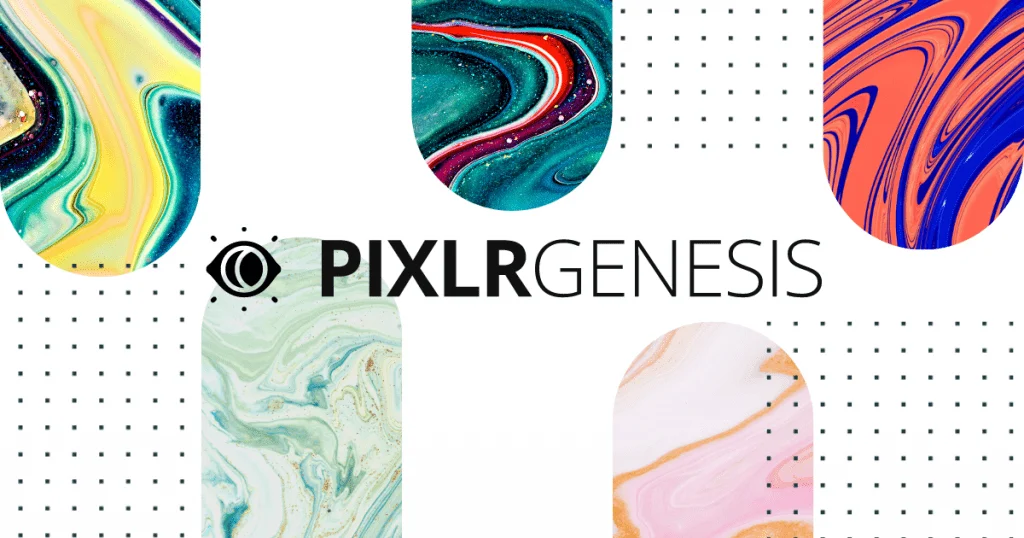Pixlr Genesis is aiming to become a community, a gathering place for artists, collectors, and aficionados

Nonfungible tokens (NFTs) are gaining popularity, bringing the latest innovation in the digital collectible industry to light. Several artists, notably Mike Winkelmann, better known as Beeple, have joined this new asset class.
Mike was not a well-known artist prior to the invention of NFTs. He has now become one of the most valuable living artists after selling a work of art for $69 million. Mike is just one of many artists that have benefited from this new chapter in art history, and he is far from the last.
These NFTs reside on the blockchain as one-of-a-kind files, with the creator’s information permanently stored on the digital ledger. Buyers are usually only allowed a limited amount of time to display their paintings, limiting access to these stunning works of art to a select few until they decide to sell.
Many people believe that original pieces of art, such as the Mona Lisa, should be seen by the general public. With this example in mind, the solution appears to be straightforward. It simply makes sense that digital art is displayed in a digital museum in the same way that art is displayed in a museum.
What is Pixlr Genesis?
Pixlr Genesis is part of the Inmagine Group, which also owns 123RF.com, a stock photo site, and Pixlr.com, a photo editor. Pixlr Genesis aspires to be the metaverse’s largest decentralized art museum, with a wide collection of exclusive NFT art.
Pixlr Genesis is aiming to become a community, a gathering place for artists, collectors, and aficionados. Participants in the community will become vital in bringing about what can only be described as the second Renaissance as new or renewed patrons of the arts.

A member of their squad, in their own words, says,
“Pixlr’s purpose is to give creators the tools they need to create amazing content and share it with the world.” NFTs, in our opinion, are a way to democratize art ownership while also creating new experiences for creators, owners, and collectors.”
The team is aiming high, pitting itself against some of the world’s most prestigious art collections, including the MOMA, the Louvre, and the National Gallery.
The creators have the upper hand
The Pixlr Genesis ecosystem, on the other hand, will be more than a demonstration case; it will develop into a full-fledged ecosystem, pushing the latest artistic and intellectual property frontiers (IP). As a result, in addition to the metaverse-based galley, an auction platform and NFT minting tools will be available.
Users will acquire access to this environment by owning a piece of NFT art, which they will be able to exhibit or hold while using exclusive NFT tools and art drops, which are only available to community members. As they interact in the Pixlr metaverse, art owners may have the option to network with other collectors.
Since then, the team has announced the release of 10,000 Pixlr Genesis NFT art works, each created using the platform’s AI features. They will be made accessible to the public in a public auction soon.
Each NFT will serve as a seed, a ticket for future drops, a right of passage into the community, and a way to earn ART tokens in addition to being lovely to look at.
With only 10,000 slots available, slots become scarce and, as a result of the scarcity principle, grow increasingly valuable over time.
Putting things on the internet
The first 2000 Pixlr Genesis NFT passes will be released on December 1, 2021, at 5:00 p.m. PST, 8:00 p.m. EST/ December 2, 2021, 12:00 a.m. UTC, 08:00 a.m. SG, according to the team. Assets will be released starting at 0.15 ETH in the public sale, with prices increasing in each of the four consecutive rounds.

The purchase of an art piece represents more than just a valuable investment; it also represents the authority to decide what gets displayed in the metaverse museum, and it may present opportunities for users to invest their secondary royalty funds and direct community attention in the direction they see fit.
Art collectors should be aware that 25% of the secondary royalties collected in perpetuity will be re-invested in the creation of new art and the support of new artists, possibly including the next Beeple.
